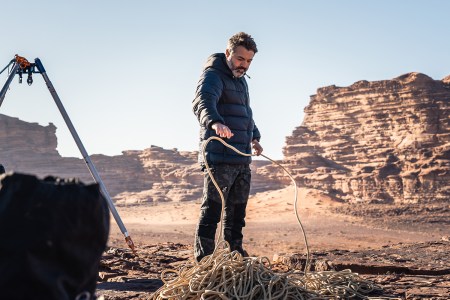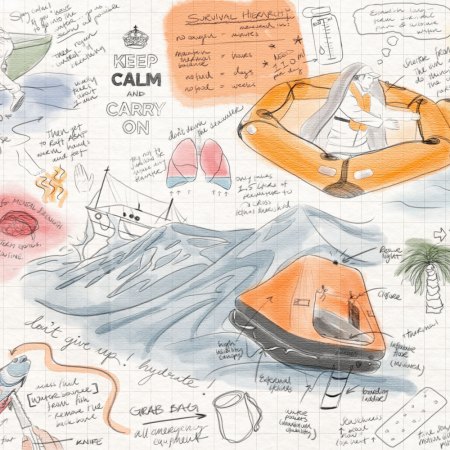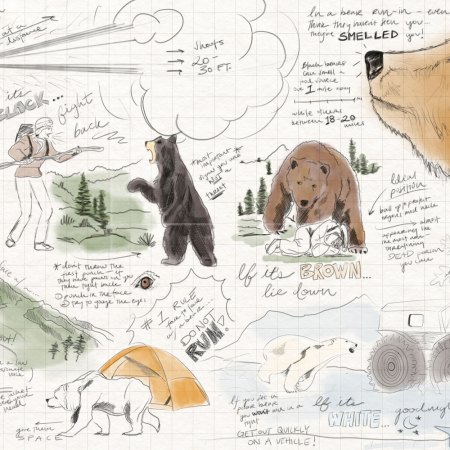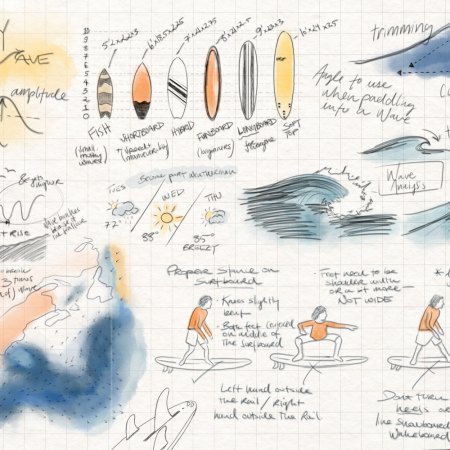This article is part of our brand-new Adventureland series, a collection of “how to” field notes from academic experts, modern explorers and endurance athletes throughout the world. From escaping bears to crossing deserts, they detail the joys of courting adventure — and their tips for surviving it.
Last year, the self-funded team Women on a Mission became the first all-female expedition to cross the world’s oldest desert completely under their own steam. The mission covered 89 miles over five days and six nights of intense trekking in the dry heat of Namibia. All in all, each team member scaled dunes totaling 4,188 meters in one of Africa’s driest regions.
Gillian Millar, 48, is a Scottish transplant to Colorado, and one of the hikers who, together, raised $70,000 to support women survivors of war in Ukraine, Afghanistan and Sudan through their partnership with the charity Women for Women International.
“I don’t really have any kind of history of doing anything like this,” says Millar, who has ventured into some awesome environments with her husband, travel writer Aaron Millar, but never done anything on this scale.
The epic adventure began at the Kuiseb River and culminated at the haunting Eduard Bohlen shipwreck on the Skeleton Coast. Along the way, Millar and team crossed salt flats and sand dunes and endured freezing nights while basking in the majesty of thousands of stars, before encountering flamingos and seal colonies as they neared the Atlantic.
Fancy trekking your own desert? Millar’s journey is proof that with a bit of grit, determination and support you can upgrade yourself from novice to old hand in just a few days. Here are her tips.
Adventurer Reza Pakravan on the Most Underrated Corners of the World
The host of Discovery’s “Hidden Frontiers” once crossed the Sahara by bike. When he talks, we listen.Give Your Body a Fighting Chance
You don’t hike a desert without showing it — and yourself — some serious respect, starting with getting in shape.
Millar says she spent the COVID pandemic drinking too many cocktails in the sun, but usually lives a fairly active life, with lots of hiking, skiing and camping in the Rocky Mountains. Even so, for an expedition of this type, she knew she needed to step it up.
“I did multiple reformer Pilates classes per week for core strength, and then I practiced on the SkiErg, these machines skiers use where they pull these cords down on either side,” she says.
“Walking in the sand with poles is pretty much the same action,” she adds. “After doing that in deep sand for the entirety of the first day, I thought my arms would be in agony, but they were fine except from a few blisters on my thumbs. I hadn’t realized that the SkiErg was such good conditioning!”
Become One With the Elements
Unsurprisingly, Millar describes the desert elements as “extreme.”
“The wind was just hitting you, I really didn’t expect it to be quite as fierce,” she says. “It was especially bad on the first day; the support crew said they’d never seen anything like it.”
Getting sand whipped into your face isn’t pleasant at the best of times, but it can get worse. On the last day, Millar spent almost six hours crossing salt flats where small shells and stones were added to the fray.
“It was pretty painful,” she admits. As well as keeping goggles handy, and packing face wipes to try to scrape off as much grit as possible come nightfall, Millar advises: “If you get into a really big sandstorm where you can’t continue to walk, then you should get as low as you can and cover your ears.”
In other words: wait it out and remind yourself that this hell can’t last forever.
Focus on Your Footwork
While the deserts of Arrakis require a special footfall so as not to wake giant worms, the Namibian desert necessitates its own approach.
“The sand dunes changed all the time,” says Millar. “I just couldn’t believe how deep they’d get. You’d take a step up and slide back down. It was like Wile E. Coyote trying to run on thin air. One technique was to run as fast as you could, but often you wouldn’t get very far. Or you could try and walk in someone else’s footsteps.”
Failing that, there is a third method. “Go heel-toe,” she advises. “That kind of slow and steady, really digging in deep approach [works]. Instead of trying to get to the top, just focus on the next step.”
Thankfully, Millar describes the way down the other side of the dune like “being in powdered snow. It was so much fun.”
Cover Up
When you’re traversing a desert with a maximum daytime temp hovering around 77°F, it’s smart to cover up. As well as the usual loose-fitting trousers and long-sleeved top, Millar recommends wearing a hat with a good brim to keep the sun off your face — but one you can tie under your chin to stop it getting blown away.
Whatever you do, don’t put on a wool hat, like Millar did when she starting feeling cold one afternoon. “After two hours, I thought it was going to pass out,” she laughs. Luckily, after swapping her hat with something more lightweight, drinking some orange juice, and 20 minutes of leaning against a friend, she was good to go again.
A good pair of gloves is also a must, along with gaiters (to prevent sand from finding its way into your boots).
Fuel Yourself
Millar isn’t certain how many calories she consumed per day during her trip, but due to some dietary restrictions, she did end up taking a slightly different approach to nutrition than her teammates.
“I had these little bags of dried fruit for each day and these little fruit bars,” she says. “I had them in these pouches in the front of my backpack, so I was constantly snacking. That was my technique and I felt energized the whole time.”
Her teammates, meanwhile, also used energy gels and would stop for a more formal lunch instead of constantly snacking.
As for staying hydrated, “I was easily drinking six liters of water a day,” Millar says. “I had a big camel pack and I got really disciplined about just sipping all the time.”
Start Late
Each day they’d walk roughly four-and-a-half miles before breaking, then do the same distance twice more, with a break in the middle for lunch. Because deserts get hotter throughout the day and cool down at night, Millar had thought they’d be up and out at dawn. Not so.
“If you start early in the day, you get the cooler part of the day, but that means later you’re stopping in the heat with no shelter,” she explains.
“We actually had the luxury to start the morning around nine, then we’d camp by mid-afternoon and we didn’t have long before the sun was starting to go down.”
Become One With the Desert
Freezing nights saw Millar wearing her ski thermals and jacket in bed. “It wasn’t super miserable,” she insists, “although I was just desperate for the morning to come.” Considering the constant noise of the wind, and the dripping, in-tent condensation they began to experience as they neared the Atlantic, it’s easy to see why.
“It would have been nice to have been in a tent with someone else and just say ‘Are we okay here?’ or ‘This wind’s going to pass,’ you know?” Millar says. “But you just grit your teeth and get through it. It helped that the landscape was so ridiculously beautiful. I felt so lucky to be there and that just energized me. The girl next to me would say ‘One-two, one-two.’ I didn’t understand at first, but she explained: ‘Just focus on step one, step two, and repeat. It’s just two steps, then another two steps.’”
Whether you’re looking to get into shape, or just get out of a funk, The Charge has got you covered. Sign up for our new wellness newsletter today.



















